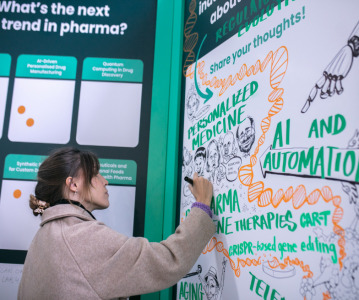Non-small cell lung cancer market to gain over $20 billion in value by 2025

It's anticipated that 65% of the total NSCLC market will go to immuno-oncology therapies.
The non-small cell lung cancer (NSCLC) market across the eight major markets (8MM) of the US, France, Germany, Italy, Spain, the UK, Japan, and China, is set to rise from $6.21 billion in 2015 to $26.71 billion by 2025, representing a very strong compound annual growth rate of 15.7%, according to research and consulting firm GlobalData.
The company’s latest report states that the impressive strength of the market over the next decade can be attributed to the increasing incorporation of premium-priced immune checkpoint inhibitors into the NSCLC treatment algorithm, the launch of new targeted therapies, and the rising incidence of the disease across the 8MM.
Cai Xuan, GlobalData’s Analyst covering Oncology, explains: “In 2015, the NSCLC space was largely dominated by generic chemotherapy and targeted therapies, which accounted for around 94% of the market, whereas immuno-oncology sales accounted for just 6%. In 2025, that trend will be reversed, with 65% of the total NSCLC market going to immuno-oncology therapies, and the remaining 35% being split between chemotherapy and targeted agents.
“A major trend in corporate strategy is the pairing of programmed cell death protein 1 (PD-1) checkpoint inhibitors with other agents. In the crowded PD-1 space, as drugs with identical mechanisms of action are launched, players are looking for ways to boost efficacy in hopes of differentiating their product from that of their competitors.”
Companies such as Merck, Roche, and Bristol-Myers Squibb are evaluating their PD-1 checkpoint inhibitors in combination with chemotherapies, targeted agents, and/or other immuno-oncology products.
In the targeted therapy arena, companies are developing novel therapies for previously unactionable mutations to address high unmet need in specific patient populations. For example, Kirsten rat sarcoma virus (KRAS)-mutant NSCLC makes up a significant (25–30%) share of the total NSCLC patient pool, yet there are no targeted therapies currently marketed for this segment of the population.
Xuan notes: “Eli Lilly’s pipeline agent abemaciclib targets KRAS patients, yet its lack of efficacy is expected to severely limit its uptake, leaving opportunities for other KRAS targeted therapies to enter the space.
“In addition to novel therapies, companies are also developing second- and third-generation targeted therapies to provide better options for patients with actionable mutations. GlobalData expects these next-generation targeted therapies to take significant patient share away from their predecessors.”
Related News
-
News Lessons from CPHI Milan 2024: Sunny Intervals for Pharma Manufacturing?
As the 2024 CPHI conference wrapped up in Milan, we caught up with L.E.K. Consulting – a global strategy consulting firm with deep expertise in pharma manufacturing – to discuss evolving market perspectives and business outlook. -
News US BIOSECURE Act passed by US House of Representatives
The controversial act, which has already impacted several foreign companies operating in the US, was passed by the House of Representatives on September 9, 2024. It is now headed for the US Senate before it can be signed into law by President Joe Biden... -
News Pharma Supply Chain People Moves
The latest appointments, promotions, and structural changes across the pharmaceutical supply chain. -
News Drug prices agreed upon as part of the US Inflation Reduction Act
The Inflation Reduction Act brought into constitution by the Biden administation in 2022, which proposed a drug price negotiation between the government and pharmaceutical companies, has reached it's first agreement. -
News BIOSECURE Act continues to loom over Chinese pharma manufacturers
With the US BIOSECURE Act on its way to passing into legislation, Chinese companies are facing declining revenues within the first half of 2024 as US pharmaceutical and healthcare companies pull their businesses from the country. -
News Ophthalmologic drug product Eylea faces biosimilar threats after FDA approvals
Regeneron Pharmaceutical’s blockbuster ophthalmology drug Eylea is facing biosimilar competition as the US FDA approves Biocon’s Yesafili and Samsung Bioepis/Biogen’s Opuviz. -
News ONO Pharmaceutical expands oncology portfolio with acquisition of Deciphera
ONO Pharmaceutical, out of Japan, is in the process of acquiring cancer-therapy maker Deciphera Pharmaceuticals for US$2.4 billion. -
News First offers for pharma from Medicare drug price negotiations
Ten high-cost drugs from various pharma manufacturers are in pricing negotiations in a first-ever for the US Medicare program. President Biden’s administration stated they have responded to the first round of offers.
Position your company at the heart of the global Pharma industry with a CPHI Online membership
-
Your products and solutions visible to thousands of visitors within the largest Pharma marketplace
-
Generate high-quality, engaged leads for your business, all year round
-
Promote your business as the industry’s thought-leader by hosting your reports, brochures and videos within your profile
-
Your company’s profile boosted at all participating CPHI events
-
An easy-to-use platform with a detailed dashboard showing your leads and performance




.png)
.png)

.png)